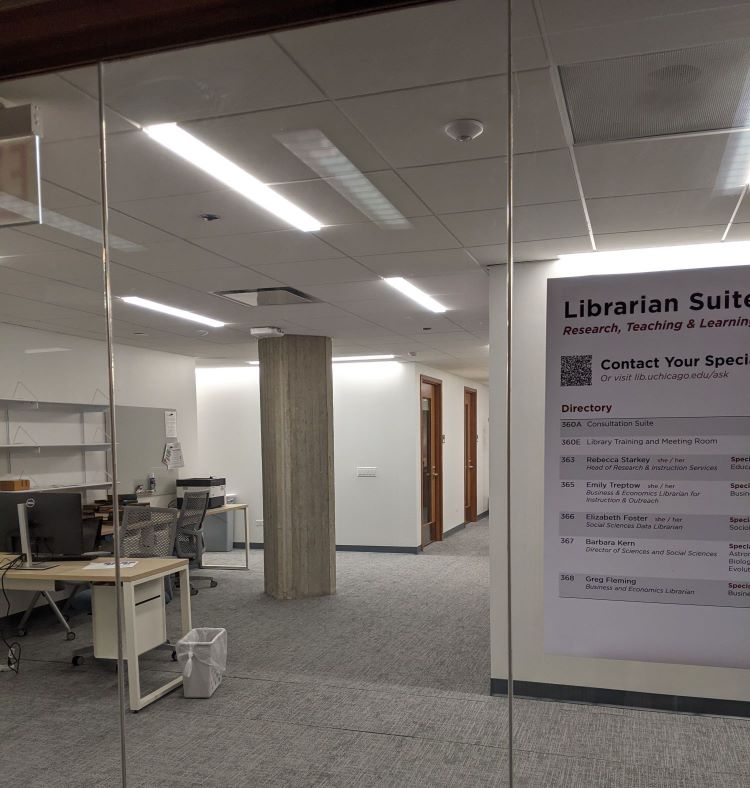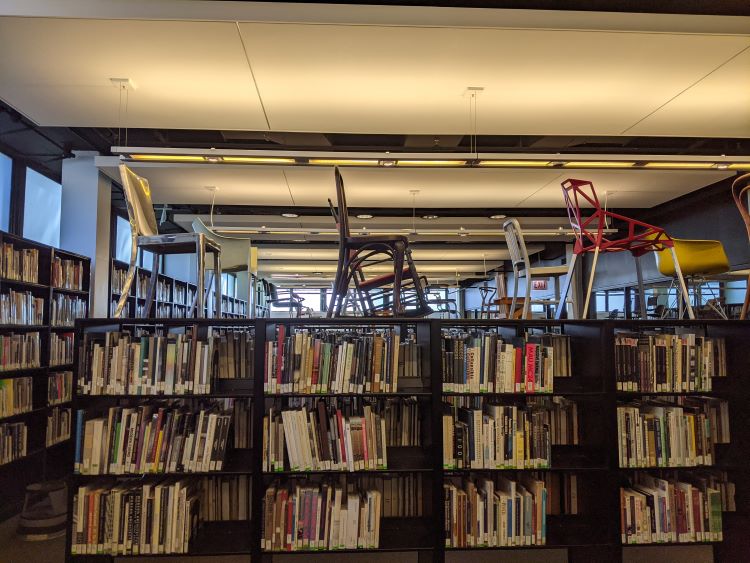The crowds are back! For ALA’s annual conference, almost 16,000 registrants gathered at Chicago’s McCormick Place Convention Center. The return to fully in-person meetings, coupled with sessions on the new hybrid work environment, has me revisiting the question of how space, both physical and digital, contributes to fostering connection and community within an organization. The topic has interested me since the move to Charles Library’s open office spaces and the subsequent pandemic, as it impacts our work, our communication and our sense of cohesion as an organization.
We had perfect weather for a tour of library renovations sponsored by ALA CORE’s Buildings for College and University Libraries Committee, on Innovative Learning Spaces: A Tour of Chicago-Area Academic Institutions.
I was most interested in the staff space renovation taking place at Regenstein Library, a 1970’s brutalist structure, almost 600,000 square feet and housing 3+ million volumes (including an onsite ASRS). John Carey, Director of Building Services and Operations, described a post-pandemic shift in building use. While the library sees over 5,000 visitors a day, there is a shift towards pandemic-weary undergraduates seeking in-person experiences as well as wifi and power outlets.
I was particularly interested in the staff areas. The renovation plan deliberately included an “investment” in staff spaces, towards all librarians having an “enclosed” space. We toured these new office suites, including both large (for supervisors) and smaller for librarians. There are consultation spaces for work with patrons, a staff kitchenette, conference room, and a common table for informal unit gatherings. While enclosed, the suite is located near open stacks and study areas and available for drop-in service. Only one staff member occupied the space on our Friday visit, but according to a UC colleague, staff are using up vacation time. Plus the upcoming NASCAR race wreaking havoc with commutes! So it will be interesting to see how these spaces work when classes are in session and library staff are onsite once again.

Renovated space for librarian offices at the University of Chicago.
Hybrid Work Culture Post-Pandemic: Challenges and Opportunities from Geographically Diverse Libraries was a panel discussion on how pandemic lessons are informing our increasingly hybrid work environment. Panelists from North Caroline, Virginia and Miami shared experiences and best practices.
From the University of Miami:
- Think creatively about the library organization structure
- Expect to train managers of hybrid teams
- Understand that achieving fairness and inclusion may be more difficult than expected
- Maintaining a healthy work/life balance and engaging in networking can also be challenging
Glen Wiley, Associate Dean for Access and Discovery Services
North Carolina State University also has:
- a renewed emphasis on staff well-being, touching bases regularly with “How are you doing?” surveys
- is rethinking office and meeting space to ensure that meeting rooms are hybrid-enabled
- reconsidering the current practice of assigning office space in a “hierachical.”
- has established in-person days for many departments, when everyone is onsite
- makes an effort to find remote work for all staff, with managers typically working on site at a higher level, “as a way of supporting staff.”
David Goldsmith, Associate Director for Collections & Research Services
Space for Community and Connection
Whether our workspaces are physical or digital, in the end it’s not the space, per se, but how our space use supports communication, connection and community. Whether we are in-person, working in a more hybrid environment, or fully remotely, we need to design our spaces to support new communication modes and recognize that optimal use of these modes requires new skills. And for some kinds of community-building at work, there continues to be value in the face to face, in the flesh connection.

Chairs can be checked out at the Illinois Institute of Technology
